Search Results
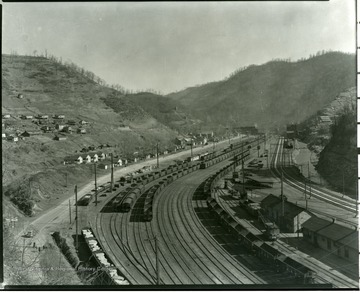
- IDNO:
- 001930
- Title:
- Peerless (Right) and Tidewater Coal Companies (Left) Looking from Kimball, W. Va.
- Description:
- Looking from Kimball, W. Va.: on Right is Peerless Coal Co.; on Left is Tidewater Coal Co. U.G. Carter worked in both mines.
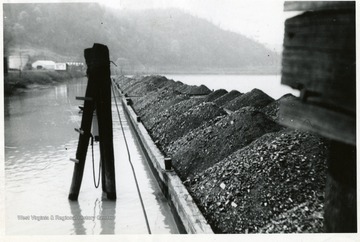
- IDNO:
- 001931
- Title:
- Coal on Barge at Granville, W. Va.
- Date:
- 1943/04/21
- Description:
- Coal on a barge outside of Granville, 1943.
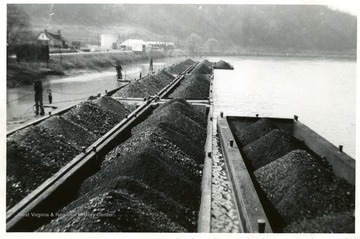
- IDNO:
- 001932
- Title:
- 9000 Tons of Coal on a Barge at Granville, W. Va.
- Date:
- 1943/05
- Description:
- Coal on barge outside of Granville, W. Va.
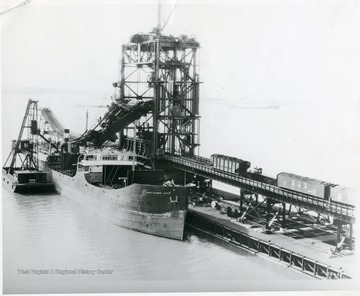
- IDNO:
- 001933
- Title:
- Ship James Ellwood Jones Being Loaded with Coal
- Description:
- The James Ellwood Jones ship being loaded with coal.
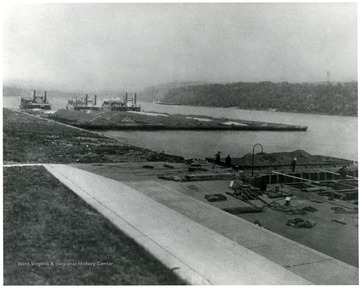
- IDNO:
- 001934
- Title:
- Tows and Coal Barges Waiting Turns on the Locks on the Ohio River
- Description:
- Barges waiting turns on the locks on the Ohio River. Coal barges are filled with 24,000 tons of coal.

- IDNO:
- 001935
- Title:
- Coal Barges on the River
- Description:
- Coal barges being pushed on unknown river and unfilled barges just off shore.

- IDNO:
- 001936
- Title:
- Tows and Coal Barges Waiting Turns on the Locks on the Ohio River
- Description:
- This unusual picture taken by the United States Engineer Office, Pittsburgh, shows four big tows of coal waiting their turn at a lock chamber of the Ohio River. The fourth tow is discernible against the farther bank of the river. There are 24,000 tons of coal in the barges of these four tows.
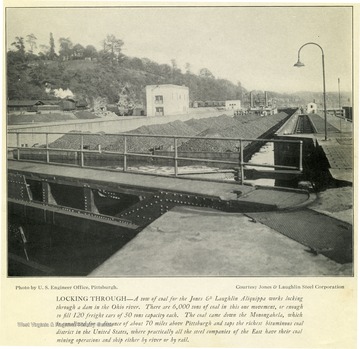
- IDNO:
- 001937
- Title:
- Tow of Coal for the Jones and Laughlin Aliquippa Works Locking Through a Dam on the Ohio River
- Description:
- A tow of coal for the Aliquippa works locking through a dam in the Ohio river. There are 6,000 tons of coal in this one movement, or enough to fill 120 freight cars of 50 tons capacity each. The coal came down the Monongahela, which is canalized for a distance of about 70 miles above Pittsburgh and taps the richest bituminous coal district in the United States, where practically all the steel companies of the East have their coal mining operations and ship either by river or by rail.
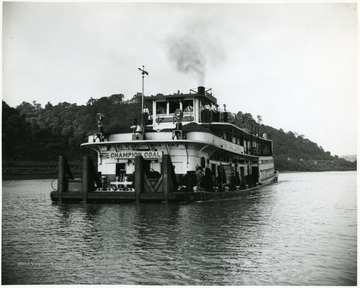
- IDNO:
- 001938
- Title:
- Champion Coal Tow Boat
- Date:
- 1947/09
- Description:
- Champion coal tow boat of the Pittsburgh Coal Co. on unknown river.
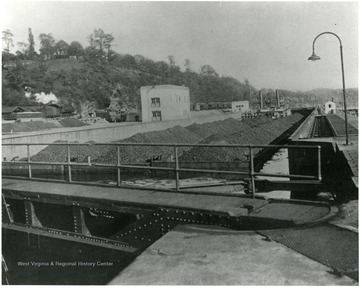
- IDNO:
- 001939
- Title:
- Tow of Coal for the Jones and Laughlin Aliquippa Works Locking Through a Dam on the Ohio River
- Description:
- A Tow of Coal for the Jones and Laughlin Aliquippa Works locking through a dam in the Ohio River. There are 6000 tons of coal in this one movement, or enough to fill 120 freight cars of 50 tons capacity each. The coal came down the Monongahela, which is canalized for a distance of about 70 miles above Pittsburgh and taps the richest bituminous coal district in the United States, where practically all the steel companies of the East have their coal mining operations and ship either by river or by rail.

- IDNO:
- 001940
- Title:
- Scenic View of Two Forms of Coal Transportation by River Barge and Railroad

- IDNO:
- 001941
- Title:
- Loading Coal Barges at Star City
- Date:
- 1967
- Description:
- Coal barges being loaded in Star City.











